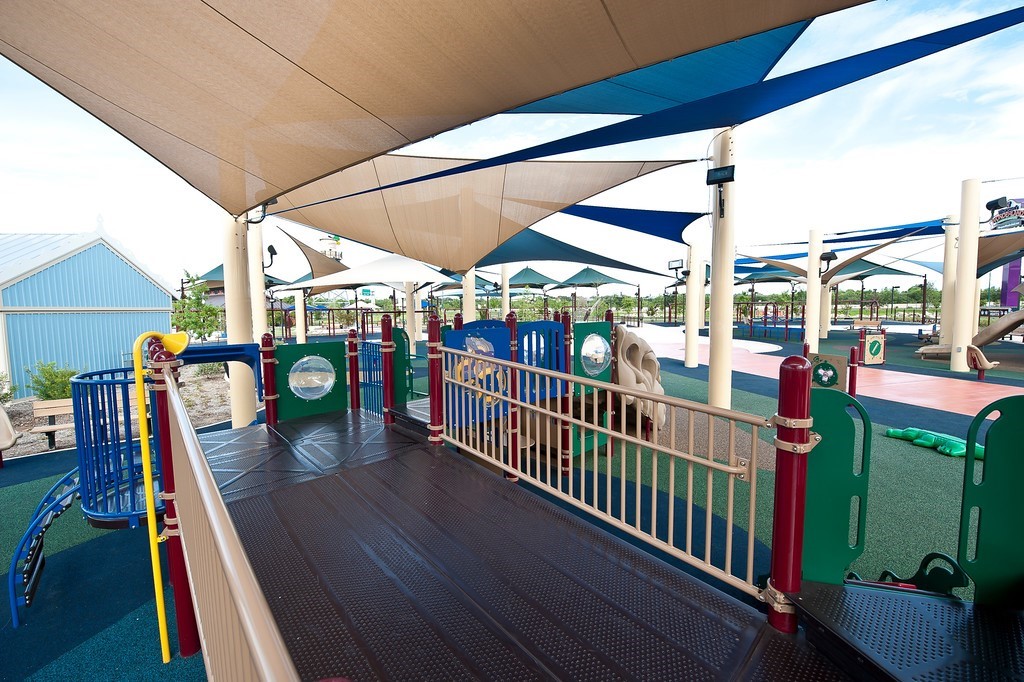Defining Inclusiveness in Playground Design
Introduction
Children, regardless of their abilities, derive a myriad of benefits from interacting and playing together on the playground. Playgrounds contribute to their development by presenting physical challenges, fostering cognitive thinking, and facilitating emotional and social connections. (Read more on playground planning for skill development)
The innate necessity for play knows no boundaries, transcending disparities between typically developing children and those with cognitive or physical disabilities. Playgrounds offer a unique opportunity for children to authentically connect, laying the foundation for essential skill development crucial to success in their adult lives. In this article, we will explore the essence and evolution of inclusive play and unveil the framework that supports the development of inclusive playgrounds. So, let’s begin!
Background of Inclusive Play
In our exploration of inclusive play design, we should start with the origins of the concept of inclusive play. Here is a little historical overview of how inclusiveness has evolved to become a critical component of playground design.
The Americans with Disabilities Act (ADA), enacted in 1990, stands as a pivotal moment in civil rights law that prohibits discrimination against individuals with disabilities in many facets of public life. With the enactment of the ADA standards, a vital topic of discussion emerged: how can we make playgrounds accessible and welcoming to everyone, regardless of their ability level? Steve King, co-founder of Landscape Structures, played a key role in addressing this question and finding solutions to create some of the first inclusive and accessible play spaces.
In 1993, King began serving on the Federal Access Board’s Recreation Access Advisory Committee, representing the only voice from a playground equipment manufacturer. He initiated a paradigm shift by incorporating the user's perspective into playground development, championing the cause of those directly benefiting from inclusive play. Thanks to King's dedication, Landscape Structures became the first company to design new playground components specifically meeting ADA requirements, recognizing that accessibility was the crucial first step towards inclusiveness within the playground.
Since then, inclusive play has evolved into a much sought after methodology in the design and development of new playgrounds for most communities.
Inclusivity vs. Accessibility
While ADA compliance is a baseline requirement for all playgrounds, inclusive design surpasses these standards by offering a spectrum of play experiences that cater to diverse needs and interests. Contrary to a common assumption that accessibility and inclusiveness are synonymous in the context of playgrounds, the reality is that simply providing space for users with mobility devices represents only a fraction of what constitutes a genuinely inclusive playground.
Inclusive playgrounds go beyond the minimum mobility requirements outlined by the ADA standards. They embrace individuals of all abilities, fostering an environment where children and adults can interact and play together seamlessly. These playgrounds not only incorporate features mandated by ADA, such as wheelchair ramps and suitable surfacing, but also extend their inclusiveness to individuals with sensory processing disorders, autism, Down syndrome, as well as those with sight or hearing impairments.
A well-conceived inclusive playground strategically balances challenge levels and children's individual capabilities while addressing a spectrum of abilities. It creates play experiences that accommodate a wide variety of needs and interests. Unlike conventional playgrounds that segregate children with disabilities or designate specific spaces for special needs equipment, truly inclusive playgrounds integrate all equipment seamlessly, fostering interaction and collaborative play among children.
How We Use the Seven Principles of Inclusive Playground Design
As discussed in our “Welcome and Support All Playground Visitors with Inclusive Design” blog, our team of designers, engineers, and inclusive play experts follow the seven principles of universal design created by a group led by Ronald Mace at North Carolina State University, when it comes to creating inclusiveness within the playground.
Principal One: Equitable Use.
This principle seeks to include as many people, regardless of ability, in the use of a space as possible. For example, playscapes like Galaxy Park or Monarch View Park use poured-in-place rubber and/or turf surfacing for children or caretakers who have mobility devices and need something smooth to maneuver on.
A Word from our Expert: “The value of a space or playscape is perceived through the eyes of its users, particularly the kids engaging in the space. It is imperative to be mindful of the individuals who will utilize the space you create or the playscape you design, allowing for the customization of the design to meet their specific needs and desires. Adopting this approach will significantly contribute to the community's acknowledgment of the genuine value embedded in investing in a high-quality playscape. In the past, I have recommended that our customers conduct surveys to assess the needs within the community. This information aids me in gaining a deeper understanding of the demographic I am designing for.” ~ Preston Rubsamen, Senior Estimator & Designer / Preconstruction Manager
Principle Two: Flexibility in Use.
The second principle is flexibility in use. It allows users to participate in play in whatever way is most comfortable for them. For example, Liberty at Windhaven Meadows Park has multiple swing variations to accommodate the needs and preferences of the different people who visit the playground.
A Word from our Expert: “The best way to provide an enjoyable playground experience for any user is to minimize the limitations on individual creativity. Every child has a unique and personal way they view and interact with the world around them, and this should be able to be reflected in any environment.” ~ Bowen Mandernach, Estimator & Designer
Principle Three: Simple and Intuitive Use.
The third principle is simple and intuitive use. Having products with simple designs that are easy to understand regardless of the user’s experience, knowledge, language skills, or current concentration level. For example, Woodhaven Grove Park utilizes Pod Climber® steps to show a clear path for playground visitors.
A Word from our Expert: “When examining the intuitive application of inclusive design, I typically pursue one of two approaches. The first involves pathing, which encompasses designs on the safety surfacing that may connect two pieces or guide individuals through direct means (e.g., a distinct color of PIP forming a pathway from one play area to the next) or creating a linear continuation of play by functionally linking elements together (e.g., using pod steppers and balance beams to connect a standalone piece to a main structure). The second strategy employs color, utilizing a primary color to highlight features such as climbers and slides, and a secondary color for means of egress throughout the play elements. This method breaks down organization into a simple and easily digestible pattern, natural for children to understand and be drawn to. Children then use these colors as associations with the type of play and the amount of fun they had, allowing them to intuitively make decisions on where to explore next in our designs.” ~ John Devillenuve, Estimator & Designer
Principle Four: Perceptible Information.
The fourth principle is perceptible information which allows for easy communication to the user regardless of ambient conditions or the user’s sensory abilities. The playground at the Little Dragons at David Daniels Elementary School utilizes panels that visitors can use as a communication and learning tool.
A Word from the Pro: “Designing heuristics is crucial for establishing a streamlined relationship with any product or system, including playgrounds. I often consider the use of Digifuse panels to convey messages or employing a symbol communication system for individuals who are unable to communicate verbally.” ~ Preston Rubsamen, Senior Estimator & Designer / Preconstruction Manager
Principle Five: Tolerance for Error.
The fifth principle is tolerance for error. Your design should minimize hazards and the adverse consequences of accidental or unintended actions. For example, Frank Kent’s Dream Park has fencing around and on the playground that keeps little ones from running off or unintentionally injuring themselves.
A Word from the Pro: “Never make compromises that would sacrifice safety for other needs. The value of a safe environment for everyone is priceless.” ~ Bowen Mandernach, Estimator & Designer
Principle Six: Low Physical Effort.
The sixth principle is low physical effort meaning that your design can be used efficiently and comfortably. It's crucial to offer multiple access points with different levels of physical challenge, always ensuring there's a path of lesser or low resistance for those who may require it. For example, the Ernie Roberts playground incorporates wheelchair-accessible ramps and transfer modules to higher play or sliding events thereby offering more low effort equitable access and encourages interactive play among kids and adults of all abilities.
A Word from the Pro: “When designing for comfort and specifically low-effort play, the use of ramps as a form of traversing to elevated play cannot be overlooked. These elements allow for a seamless transition from ground-level play without the need to slow down the fun!” ~ John Devillenuve, Estimator & Designer
Principle Seven: Size and Space for Approach and Use.
Lastly, the seventh principle is size and space for approach and use. Keeping this principle in mind ensures that people will have the space necessary to move around comfortably and will be able to access equipment. For example, the playground at Morgan’s Wonderland has decks wide enough for those who require wheelchairs or other mobility devices to maneuver around the structure easily.
A Word from the Pro: “Scale emerges as a fundamental design principle that exerts significant influence on the playground products we create, especially in relation to human ergonomics. When conceptualizing a space, it is crucial to take into account the user's age range and other relevant data, as this comprehension plays a pivotal role in crafting a space that accommodates their spatial requirements. The deeper our understanding of the user, the more skillfully we can tailor the design to meet their specific needs.” ~ Preston Rubsamen, Senior Estimator & Designer / Preconstruction Manager
By embracing Inclusive Design, we enhance accessibility, safety, comfort, and social engagement across all our play spaces. This approach lays a robust groundwork for designing inclusive playgrounds, fostering an environment where everyone can play, learn, and thrive together.
Final Thoughts
In summary, the exploration of inclusive play has illuminated its significant influence on the development and well-being of children with diverse abilities. From the historical roots embedded in the Americans with Disabilities Act (ADA) to the visionary efforts of individuals like Steve King, who spearheaded the integration of user perspectives into playground design, the evolution of inclusivity within play spaces has been nothing short of transformative.
The distinction between inclusiveness and accessibility has been clarified, emphasizing that true inclusivity goes beyond mere compliance with ADA standards. Inclusive playgrounds, as opposed to segregating spaces or equipment, seamlessly integrate all elements to foster collaborative play among children with diverse abilities and needs.
Exploring the seven principles of inclusive playground design has provided us with a roadmap for creating spaces that cater to the varied needs and preferences of users. Each principle contributes to the creation of true inclusiveness that encourages maximum play benefits for all visitors.
In embracing these principles, we cultivate spaces that respect and respond to the unique qualities of everyone. By adopting the insights shared by our experts, we can build not just play spaces, but thriving communities that value and prioritize the diverse experiences of every child. The commitment to inclusive play is not just a design philosophy; it is a celebration of diversity, fostering a sense of belonging for every child, regardless of their abilities.
If you are looking to create inclusive play spaces in your community, our team of experts is here to assist and guide you along the way. Contact us to create an inclusive space for all ages and abilities to enjoy for generations to come.



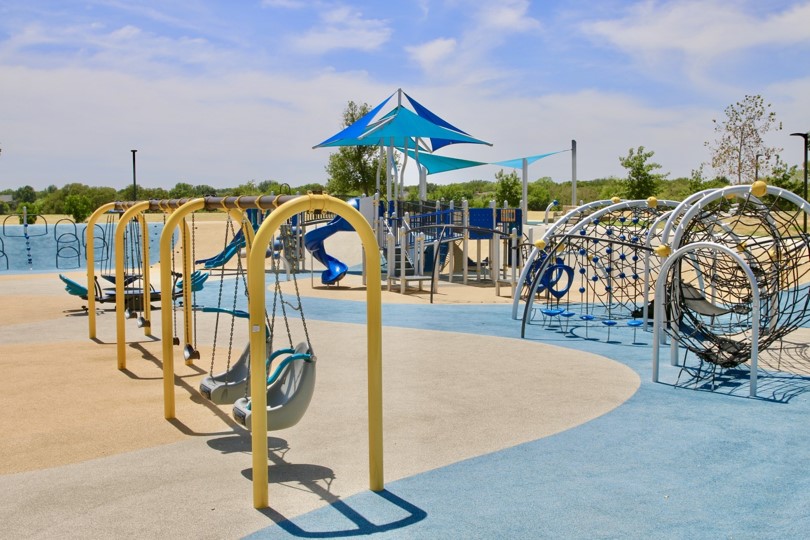
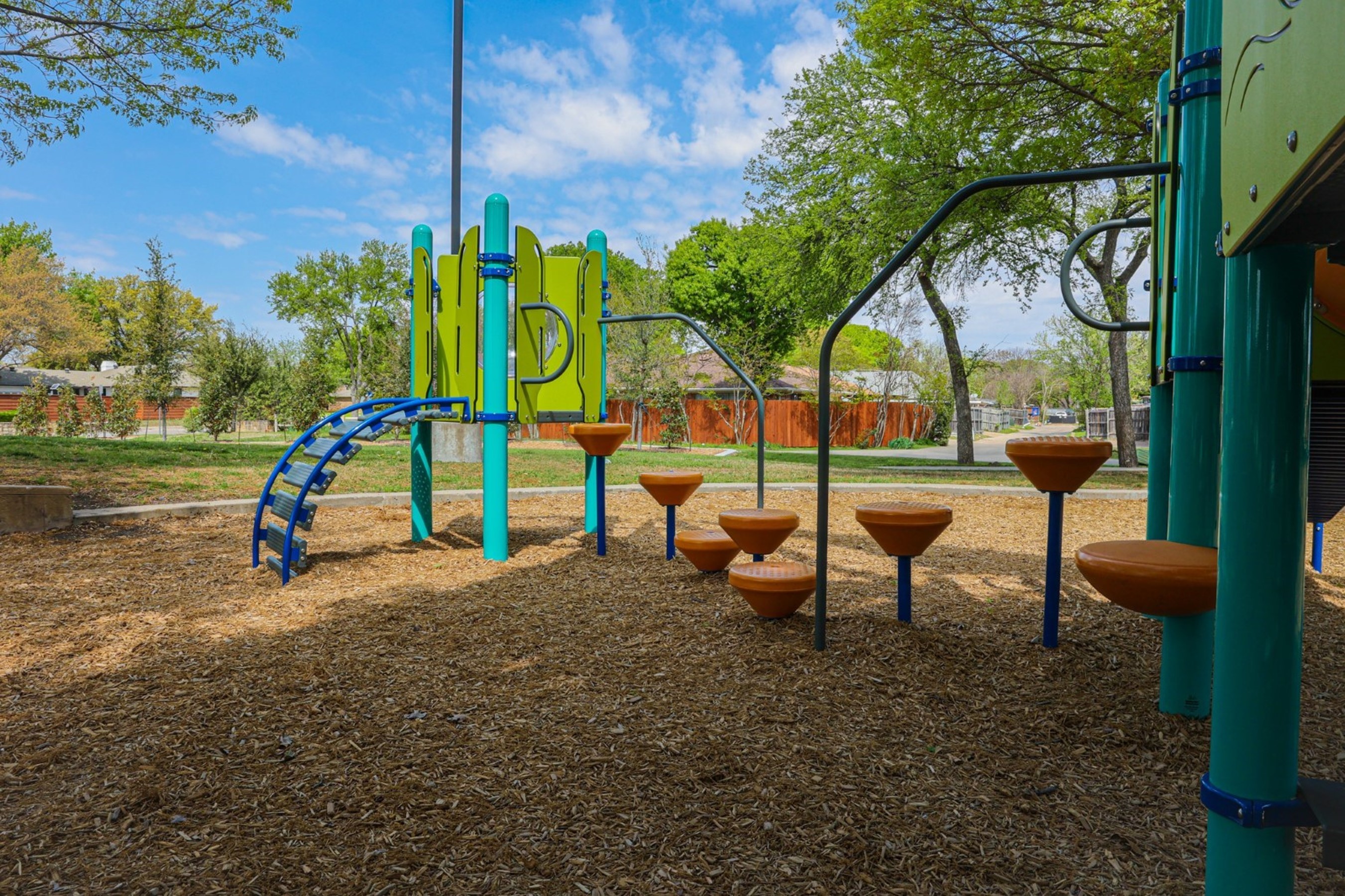
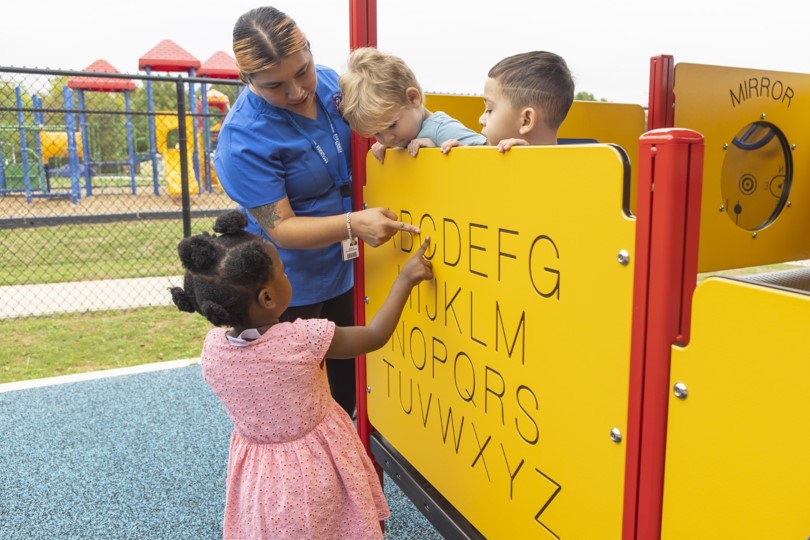
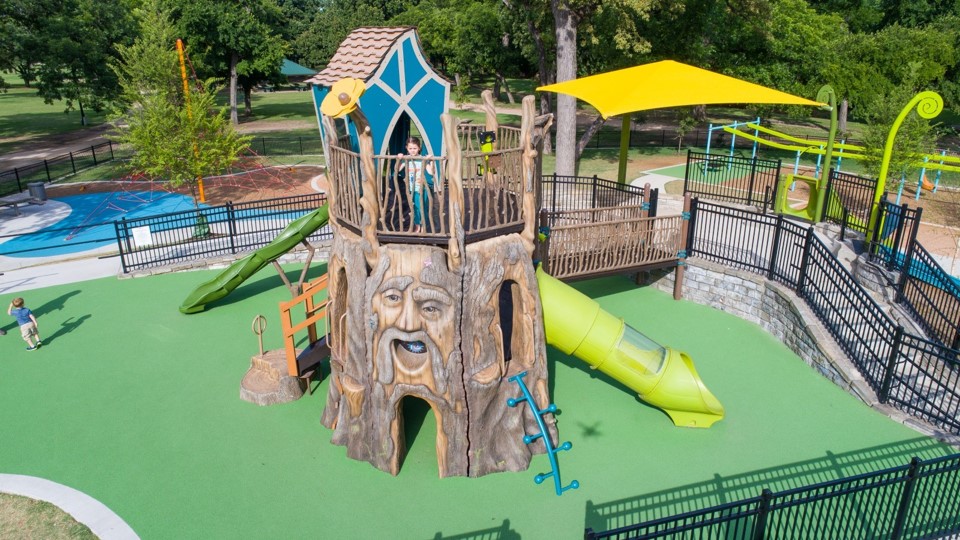
.jpg?width=4032&height=3024&name=Ernie%20Roberts%20Park%20-%20DeSoto%2c%20TX%20(6).jpg)
